Introduction to Temperature Sensors
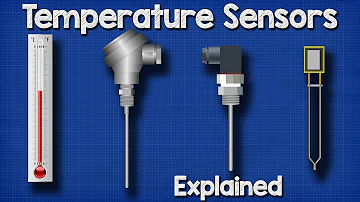
Temperature Sensors Explained
Catalog
I Classification
Temperature sensors are among the most frequently used sensors in modern technology, widely applied in computers, automobiles, kitchen appliances, air conditioners, and household thermostats. As of 2025, the global temperature sensors market has reached USD 8.03 billion, demonstrating the critical importance of these devices across industries. The five common types of temperature sensors include thermocouples, thermistors, RTDs (Resistance Temperature Detectors), analog thermometer ICs, and digital thermometer ICs.
1. Thermocouple
A thermocouple consists of two different conductors or semiconductors joined together. The thermoelectric potential EAB (T, T0) is composed of the contact potential and the temperature difference potential. The contact potential is generated at the junction of two different conductors or semiconductors, which is related to the properties of the two materials and the temperature at the contact point.
When two different conductors or semiconductors A and B are connected to form a loop, as long as the temperature at the two junctions differs, a current will flow in the circuit. The temperature at one end is T, called the working end (or hot junction), while the other end is at temperature T0, called the reference end (or cold junction). The electromotive force generated is called thermoelectric EMF. This phenomenon of electromotive force generation due to temperature differences is named the Seebeck effect, discovered in 1821.
Thermocouples are highly standardized sensors with different metal pairings designed to handle various temperature ranges from as low as −200°C up to 1800°C or higher, making them ideal for extreme temperature measurements in industrial furnaces, aerospace applications, and high-temperature manufacturing processes.

Fundamental Thermocouple Circuit
2. Thermistor
A thermistor is a type of temperature-sensitive resistor whose resistance value changes significantly with temperature. Unlike fixed resistors, thermistors are variable resistors widely used in various electronic components. Different from resistance thermometers that use pure metals, thermistors are typically made of ceramic semiconductors or polymer materials.
Positive Temperature Coefficient (PTC) thermistors have higher resistance values at higher temperatures, while Negative Temperature Coefficient (NTC) thermistors exhibit lower resistance at higher temperatures. Thermistors typically provide higher accuracy within limited temperature ranges, usually from −55°C to 150°C, with some specialized models extending to 250°C when sealed with glass.
Thermistors offer exceptional sensitivity and cost-effectiveness, making them ideal for applications requiring precise temperature monitoring in narrow ranges, such as battery management systems, HVAC controls, and consumer electronics.
3. Resistance Temperature Detector (RTD)
Resistance Temperature Detectors (RTDs) measure temperature based on the principle that the electrical resistance of conductors changes predictably with temperature.
The temperature-sensing element of RTDs is commonly made from metal wires such as platinum (most common), copper, or nickel. At cryogenic temperatures, materials like carbon, germanium, and rhodium-iron are often used. Because platinum is the most widely used material, these sensors are frequently called platinum resistance thermometers or Pt100/Pt1000 sensors (referring to their resistance at 0°C).
Precision platinum resistance thermometers are among the most accurate temperature sensors available, covering a temperature range of approximately −200°C to 850°C, with accuracy as high as ±0.1°C to ±0.5°C. They can achieve measurement precision of 0.001°C in laboratory settings. RTDs offer superior long-term stability and repeatability compared to thermocouples, making them the preferred choice for applications requiring high accuracy, such as pharmaceutical manufacturing, food processing, and scientific research.

Construction of RTD Sensor
4. Analog Thermometer IC
Analog low-voltage temperature sensors are integrated circuits designed to replace discrete thermistors and fixed resistors in voltage divider circuits. Popular examples include the TMP36 from Analog Devices and the LM35 series from Texas Instruments.
Compared to thermistors, the output voltage provided by these analog ICs is highly linear. In the temperature range from −40°C to +125°C, typical analog temperature sensors provide a linear output with a slope of 10mV/°C, achieving accuracy of ±2°C without calibration. These sensors are self-powered, require no external components, and provide a voltage output directly proportional to temperature, making them ideal for simple temperature monitoring applications in embedded systems and consumer electronics.
5. Digital Thermometer IC
Digital temperature sensor ICs are more sophisticated than analog versions but offer superior accuracy and simplified system design. These sensors perform analog-to-digital conversion internally, eliminating the need for external ADC circuits in microcontroller-based systems.
Modern digital temperature sensors in 2025 include advanced models such as:
MAX30208 from Analog Devices: Offers ±0.1°C accuracy from +30°C to +50°C, operates from 1.7V to 3.6V, with only 67μA operating current and 0.5μA standby current. Features 16-bit resolution (0.005°C) and I²C digital interface.
TMP118 from Texas Instruments: Ultra-small PicoStar™ package (0.336mm²) with high precision, ideal for space-constrained applications.
Si7051 from Silicon Labs: Industry-leading low power consumption with ±0.1°C accuracy within human body temperature range (35.8°C to 42°C).
DS18B20 from Maxim Integrated: Classic 1-Wire digital sensor with ±0.5°C accuracy and temperature range of −55°C to +125°C. Can be powered directly from the data line, requiring only two connections (data/power and ground).
STTS22H from STMicroelectronics: Optimized for −10°C to 60°C range, designed for asset tracking devices and home appliances with ultra-low power consumption.
These digital ICs communicate via standard protocols like I²C, SPI, or 1-Wire, making them easy to interface with microcontrollers and embedded systems. The digital IC temperature sensor market was valued at USD 2.5 billion in 2024 and is projected to reach USD 4.7 billion by 2033, growing at a CAGR of 7.2%, reflecting the increasing demand for smart, connected temperature monitoring solutions.
II Working Principle
Different types of temperature sensors operate based on distinct physical principles. Understanding these mechanisms is essential for selecting the appropriate sensor for specific applications:
1. Thermocouple Sensing
Thermocouples operate on the Seebeck effect principle. They consist of two dissimilar metal wires welded together at one end (the measuring junction or hot junction). When this junction experiences a different temperature than the other end (the reference junction or cold junction), a voltage is generated that is proportional to the temperature difference.
By measuring the ambient temperature of the reference junction and the voltage generated, the temperature at the measuring junction can be accurately determined. Different thermocouple types (K, J, T, E, N, R, S, B) use different metal combinations, each optimized for specific temperature ranges and environments. The sensitivity of thermocouples, defined as the change in output voltage per degree of temperature change, typically ranges from 5 to 70 microvolts/°C depending on the thermocouple type.
Since thermocouple sensitivity is independent of wire thickness, very thin wires can be used, enabling fast response times—essential for measuring rapidly changing temperatures. Modern thermocouple amplifiers and cold-junction compensation ICs have greatly simplified thermocouple signal conditioning.
2. Resistance Sensing
Resistance-based temperature sensors (RTDs and thermistors) operate on the principle that the electrical resistance of materials changes predictably with temperature. For different materials, the relationship between resistance and temperature varies, and this change can be measured and used as a temperature indicator.
Resistance changes occur in two distinct ways:
● Positive Temperature Coefficient (PTC):
Temperature increases → resistance increases
Temperature decreases → resistance decreases
● Negative Temperature Coefficient (NTC):
Temperature increases → resistance decreases
Temperature decreases → resistance increases
RTDs typically exhibit PTC behavior with a nearly linear resistance-temperature relationship, while thermistors (usually NTC) show highly nonlinear but very sensitive resistance changes. The resistance is measured using bridge circuits, constant current sources, or specialized IC interfaces that convert resistance to voltage or digital signals.

PTC and NTC Temperature Coefficient Comparison
3. Principle of Metal Expansion
Metals expand when heated and contract when cooled due to increased atomic vibration at higher temperatures. This thermal expansion is predictable and proportional to temperature change. Temperature sensors based on this principle convert the physical expansion or contraction into measurable signals such as displacement, which can then be translated into temperature readings. This principle is fundamental to mechanical thermometers and some industrial temperature switches.
4. Bimetallic Strips
A bimetallic strip consists of two metal strips with different thermal expansion coefficients bonded together. As temperature changes, one metal expands more than the other, causing the composite strip to bend. The direction and degree of bending are proportional to the temperature change. This curvature can be mechanically linked to a pointer for visual indication or to an electrical contact for switching applications. Bimetallic temperature sensors are robust, require no external power, and are commonly used in thermostats, circuit breakers, and industrial temperature controllers.
5. Deformation Curve of Liquid and Gas
When temperature changes, the volume of liquids and gases changes according to their thermal expansion properties. In sealed systems, this volume change results in pressure changes that can be measured. Traditional liquid-in-glass thermometers (mercury or alcohol) and gas-filled pressure thermometers operate on this principle. The expansion is converted into position changes using various mechanisms such as bourdon tubes, bellows, or diaphragms, which can drive potentiometers or mechanical linkages to produce electrical output signals. While less common in modern electronic systems, these sensors remain valuable in harsh environments where electronic sensors may fail.
III Selection of Temperature Sensor in Industry
Temperature is a critical parameter in industrial production, directly affecting product quality, equipment performance, process efficiency, and personnel safety. Selecting the appropriate temperature sensor requires careful consideration of multiple factors beyond just measurement accuracy and range.
In selecting temperature sensors for industrial applications, several key principles should guide the decision:
The operation method must meet the observation needs of measurement personnel
Convenient for daily inspection and maintenance
The upper and lower measurement temperature limits should exceed the temperature fluctuation range of the measured medium
Measurement accuracy must meet the technical requirements of the production process
Cost-effectiveness and long-term reliability
Compatibility with existing control systems and data acquisition infrastructure
Let's examine these considerations in detail across four critical aspects:
1. Choose by Usage
The intended application significantly influences sensor selection:
Local Display Only: If only local temperature indication is required without remote monitoring, liquid-in-glass thermometers, bimetallic thermometers, or dial-type pressure thermometers are suitable choices. These are cost-effective, require no power supply, and provide direct visual readouts.
Alarm Functionality: When temperature monitoring requires alarm capabilities at critical thresholds, select thermometers with built-in alarm contacts or integrate temperature switches that trigger warnings when limits are approached.
Remote Monitoring: For applications requiring long-distance display, data logging, or integration with control systems, thermistors, thermocouples, RTDs, or temperature transmitters (4-20mA output) are appropriate. These provide electrical signals that can be transmitted over considerable distances.
Digital Integration: Modern IoT and Industry 4.0 applications benefit from digital temperature sensors with I²C, SPI, or wireless communication capabilities, enabling seamless integration with smart manufacturing systems and cloud-based monitoring platforms.
2. Temperature Range of the Medium
The operating temperature range is the primary criterion for sensor selection. Different sensor technologies are optimized for specific temperature ranges:
For normal temperature ranges, thermocouples, resistance thermometers, pressure thermometers, and bimetallic thermometers are all viable options. The specific choice depends on other factors such as accuracy requirements and environmental conditions.
Organic-liquid glass thermometers with red indicating fluid offer excellent readability but cannot be used with electrical contacts. They are preferred for temperatures below 100°C when signal transmission is not required. Bimetallic thermometers provide clear scales, are mercury-free, and offer vibration resistance, making them ideal for temperatures below 300°C in industrial environments.
The following table provides updated guidance for sensor selection based on temperature ranges (as of 2025):
Temperature Range of the Medium | Temperature Sensor Applied |
Normal temperature | Thermocouple |
Resistance thermometer (RTD) | |
Pressure thermometer | |
Bimetallic thermometer | |
t ≤ 100°C | Organic-liquid glass thermometer |
100°C < t < 150°C | Copper resistance thermometer |
150°C ≤ t < 300°C | Bimetallic thermometer |
300°C ≤ t ≤ 600°C | Type K thermocouple (Chromel-Alumel) |
600°C < t ≤ 1200°C | Type K thermocouple (Chromel-Alumel) |
1200°C < t ≤ 1600°C | Type S thermocouple (Pt10%Rh-Pt) |
t > 1600°C | Type B thermocouple (Pt30%Rh-Pt6%Rh) |
3. Measurement Accuracy
Accuracy requirements vary significantly across applications and directly influence sensor selection and cost:
High Precision Applications (±0.1°C to ±0.5°C): Use platinum resistance thermometers (Pt100, Pt1000), Type S or R platinum-rhodium thermocouples, or precision digital sensors like MAX30208. These are essential for pharmaceutical manufacturing, laboratory research, calibration standards, and medical applications.
Standard Industrial Applications (±1°C to ±2°C): Copper resistance thermometers, Type K or J thermocouples, and standard digital IC sensors provide adequate accuracy for most industrial processes, HVAC systems, and general manufacturing.
General Monitoring (±2°C to ±5°C): Thermistors, bimetallic thermometers, and basic analog sensors are suitable for non-critical temperature monitoring, consumer appliances, and environmental sensing.
It's important to note that sensor accuracy can degrade over time due to drift, contamination, or mechanical stress. Regular calibration schedules should be established based on the criticality of the measurement and manufacturer recommendations. Modern digital sensors often include self-diagnostic features and drift compensation algorithms to maintain accuracy over extended periods.
4. Chemical Properties of the Medium
The chemical environment significantly impacts sensor longevity and measurement reliability. Material compatibility must be carefully evaluated:
Oxidizing and Neutral Environments: Most thermocouples and platinum RTDs perform well in oxidizing or neutral atmospheres. These are the most common industrial environments and present fewer material compatibility challenges.
Reducing Environments: Thermocouples and platinum RTDs cannot operate reliably for extended periods in reducing atmospheres (hydrogen-rich, carbon monoxide, etc.) without special protection. The sensing elements can be chemically reduced, leading to measurement errors and sensor failure.
Corrosive Environments: When measuring temperatures above 100°C, copper resistance thermometers and thermistors are susceptible to oxidation and corrosion. Protective measures are essential.
Protection Strategies: Appropriate protective sheaths or thermowells must be selected based on the chemical properties of the measured medium and operating temperature:
Below 600°C: Medium carbon steel, copper, brass, or lead can be used for protective sheaths in non-corrosive environments.
Below 1000°C: Austenitic stainless steel (304, 316, 321) provides excellent corrosion and oxidation resistance for most industrial applications.
Above 1000°C: Ceramic materials (alumina, silicon carbide), high-temperature alloys (Inconel, Hastelloy), or refractory metals may be required depending on the specific environment.
Highly Corrosive Media: Specialized materials such as tantalum, titanium, PTFE coatings, or ceramic-coated metals may be necessary for acids, alkalis, or aggressive chemicals.
System Integration Considerations: For thermocouple installations, ensure compatibility between the thermocouple type, compensating extension wires, cold junction compensation methods, and secondary instrumentation. Mismatched components can introduce significant measurement errors. During installation, proper insertion depth, mounting orientation, and thermal insulation around penetrations must be maintained to ensure measurement accuracy and prevent thermal losses that could affect readings. Modern installations increasingly use temperature transmitters that convert sensor signals to standardized 4-20mA or digital protocols, simplifying system integration and improving noise immunity.
IV Precautions for Use
Proper installation and usage of temperature sensors are critical for obtaining accurate, reliable measurements. The following considerations apply particularly to thermocouples and RTDs, which are the most common industrial temperature sensors, but many principles extend to other sensor types as well:
1. Improper Installation
Improper installation occurs when the sensor's location or insertion depth fails to accurately represent the true temperature of the process being measured. This is one of the most common sources of measurement error. Specific guidelines include:
Avoid Thermal Gradients: Sensors should not be installed too close to furnace doors, heating elements, or cooling zones where temperature gradients are steep. Position sensors in representative locations that reflect the average process temperature.
Adequate Insertion Depth: The sensor's insertion depth should be at least 8 to 10 times the diameter of the protective tube or thermowell. This ensures the sensing element reaches thermal equilibrium with the measured medium rather than being influenced by ambient conditions. For pipe installations, insert to at least one-third of the pipe diameter, preferably to the centerline for flowing media.
Seal Penetrations: Gaps between the protective tube and furnace wall or vessel penetration must be filled with appropriate thermal insulation materials such as ceramic fiber, refractory cement, or high-temperature sealant. Unsealed gaps allow hot and cold air convection, creating measurement errors and potential safety hazards.
Cold Junction Location: For thermocouples, ensure the reference junction (cold junction) is located in a stable temperature environment, ideally below 50°C. If the cold junction temperature exceeds 100°C, measurement accuracy will be severely compromised. Use cold junction compensation devices or temperature transmitters with built-in compensation.
Electromagnetic Interference: Temperature sensors should not be installed in strong magnetic or electric fields. Route sensor cables separately from power cables, motor drives, and high-frequency equipment. Never install thermocouples and power cables in the same conduit, as electromagnetic interference can induce voltages that cause measurement errors.
Flow Considerations: In gas or liquid flow measurements, install sensors against the flow direction to ensure maximum contact with the medium. The sensing element must be fully immersed in the flowing medium, not in stagnant zones or dead spaces where temperature may not be representative.
Vibration and Mechanical Stress: Secure sensors properly to prevent vibration-induced wear or mechanical failure. Use vibration dampeners or flexible mounting arrangements in high-vibration environments. Avoid excessive bending or tension on sensor cables.
2. Insulation Fault
Insulation degradation is a progressive failure mode that becomes increasingly problematic at elevated temperatures. When excessive dirt, dust, salt deposits, or slag accumulates on protective tubes and terminal blocks, electrical insulation between the sensor and ground (or between sensor elements) deteriorates.
This problem intensifies at high temperatures because:
Contaminants become more conductive at elevated temperatures
Moisture absorbed by deposits can create conductive paths
Chemical reactions between contaminants and insulation materials accelerate
Insulation faults cause thermoelectric potential loss in thermocouples and introduce electrical noise and ground loops, resulting in measurement errors that can exceed several hundred degrees Celsius. For RTDs, insulation faults create parallel resistance paths that alter the measured resistance value.
Prevention measures:
Regularly clean sensor housings, terminal blocks, and connection heads
Use sealed or weatherproof connection heads in dusty or humid environments
Apply protective coatings to exposed surfaces in corrosive atmospheres
Perform periodic insulation resistance testing (typically should exceed 100 MΩ at room temperature)
Replace sensors showing insulation degradation before complete failure occurs

Ceramic Fiber Insulation (Modern Alternative to Asbestos)
3. Thermal Inertia
Thermal inertia, also called thermal time constant or response time, refers to the delay between an actual temperature change and the sensor's indication of that change. This lag is particularly significant during rapid temperature transients and can mask true process dynamics.
Impact on measurements: Due to thermal inertia, the sensor's indicated value lags behind actual temperature changes. During rapid temperature fluctuations, the sensor may show smaller amplitude variations than actually occur in the process. The larger the time constant, the more the sensor smooths out temperature variations, potentially hiding critical process upsets or control problems.
Factors affecting thermal time constant:
Inversely proportional to: Heat transfer coefficient (faster heat transfer = faster response)
Directly proportional to: Sensing element diameter, material density, and specific heat capacity
Strategies to minimize thermal inertia:
Reduce sensing element size: Use smaller diameter thermocouples or RTDs. Thin-film RTDs and fine-wire thermocouples offer significantly faster response than traditional designs.
Minimize protective sheath mass: Select thin-walled thermowells made from materials with high thermal conductivity (e.g., copper alloys where chemically compatible).
Increase heat transfer: Ensure good thermal contact between the sensing element and protective sheath. Some designs use thermal paste or spring loading to improve contact.
Exposed junction thermocouples: For non-corrosive, non-pressurized applications, exposed junction thermocouples (without protective sheaths) provide the fastest response but require frequent replacement due to environmental exposure.
Surface-mount sensors: For surface temperature measurement, use sensors specifically designed for surface mounting with minimal thermal mass.
Modern digital temperature sensors often specify time constants ranging from milliseconds (for small IC sensors) to several seconds (for industrial RTDs with heavy thermowells). Select sensors with response times appropriate for your application's dynamic requirements.
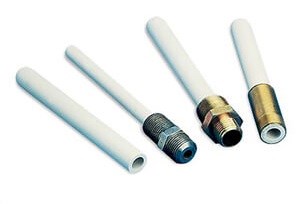
Ceramic Thermocouple Protection Tubes for High-Temperature Applications
4. Thermal Resistance
At elevated temperatures, thermal resistance between the process and the sensing element can introduce significant measurement errors. When coal ash, dust, scale, or other deposits accumulate on the exterior of protective tubes, they act as thermal insulators that impede heat transfer to the sensor.
This thermal barrier causes the sensor to indicate a lower temperature than actually exists in the process. The error magnitude depends on:
Thickness and thermal conductivity of the deposit layer
Process temperature level (higher temperatures = larger errors)
Heat flux through the sensor assembly
Mitigation strategies:
Regular cleaning: Establish maintenance schedules to clean protective tubes, especially in dusty or fouling environments. Automated cleaning systems (air purge, mechanical scrapers) can be installed for critical applications.
Self-cleaning designs: Use retractable sensors that can be withdrawn for cleaning without process shutdown, or install sensors in locations with high flow velocity that provides natural cleaning action.
Material selection: Choose protective tube materials that resist fouling or to which deposits adhere less readily.
Non-contact measurement: For severe fouling conditions, consider infrared or radiation pyrometers that measure temperature without physical contact with the process.
Monitoring and diagnostics: Modern smart sensors can detect fouling through changes in response time or by comparing multiple sensors. Implement predictive maintenance based on sensor diagnostics.
In 2025, advanced sensor technologies include self-diagnostic capabilities that can alert operators to fouling conditions before measurement accuracy is severely compromised, enabling condition-based maintenance rather than time-based schedules.
V Application Fields
Temperature sensors are the most commonly used sensors across all industries. Modern temperature sensors feature compact designs, enhanced accuracy, wireless connectivity, and smart capabilities, making them indispensable in diverse applications. As of 2025, the temperature sensors market has reached USD 8.03 billion, reflecting their critical role in emerging technologies including IoT, artificial intelligence, autonomous vehicles, and smart infrastructure. They are applied in the following areas:
1. Sensing Application
Temperature sensors serve as primary or secondary transducers for measuring various physical quantities beyond temperature itself. The thermal conversion method is frequently employed to measure:
Flow Rate: Thermal mass flow meters use temperature sensors to detect heat transfer from a heated element, correlating to mass flow rate in gases and liquids.
Thermal Radiation: Bolometers and pyroelectric sensors detect infrared radiation by measuring temperature changes in absorbing elements.
Gas Pressure and Composition: Pirani gauges measure vacuum pressure through thermal conductivity, while some gas analyzers identify gas composition based on thermal properties.
Humidity: Some humidity sensors operate by measuring temperature differences between dry and wet bulb thermometers.
Thermochemical Reactions: Calorimeters use temperature sensors to measure heat of reaction, combustion efficiency, and chemical process kinetics.
Power Dissipation: Temperature sensors monitor heat generation in electronic components, enabling thermal management and preventing overheating in CPUs, power semiconductors, and battery systems.
These measured values are typically output as standardized electrical signals (4-20mA, 0-10V) or digital data (I²C, SPI, Modbus, etc.) for integration with control systems and data analytics platforms.
2. Biomedical Domain
Specialized temperature sensors designed for biomedical applications must meet stringent requirements for accuracy, biocompatibility, and safety. These sensors feature:
Ultra-low power consumption: Essential for battery-powered wearable devices and implantable sensors
Long-term stability: Minimal drift over months or years of continuous operation
High reliability: Medical-grade components with failure rates measured in parts per million
Exceptional accuracy: Typically ±0.1°C or better in the physiological range of 32°C to 44°C
Fast response time: Rapid detection of temperature changes for fever monitoring and thermal therapy
Miniaturization: Extremely small form factors for minimally invasive applications
Medical applications include:
Clinical thermometers (oral, rectal, tympanic, forehead)
Continuous patient monitoring systems in hospitals and ICUs
Wearable health monitors and smartwatches with body temperature tracking
Implantable medical devices (pacemakers, neurostimulators)
Thermal ablation therapy systems for cancer treatment
Incubators and warming systems for neonatal care
Laboratory equipment (PCR machines, cell culture incubators, blood storage)
Pharmaceutical cold chain monitoring for vaccine and medication storage
Advanced sensors like the MAX30208 and Si7051, with their ±0.1°C accuracy in the human body temperature range and ultra-low power consumption, represent the state-of-the-art in medical temperature sensing as of 2025.
Melexis Temperature Sensing for Medical Applications
3. Space Application
Space applications demand temperature sensors that can withstand extreme conditions including vacuum, radiation, wide temperature swings, and zero maintenance for years or decades. Historically, thermistors and silicon PN junction sensors have been used for spacecraft thermal management. However, traditional implementations using discrete analog and digital interface circuits are bulky, power-hungry, and expensive—unsuitable for modern micro/nano satellites and CubeSats.
Modern space-grade temperature sensors feature:
Integrated digital output: Smart temperature sensors with built-in ADCs and digital interfaces (I²C, SPI) reduce system complexity, mass, and power consumption
Radiation hardness: Specialized manufacturing processes and design techniques ensure operation in high-radiation environments
Wide temperature range: Typically −55°C to +125°C or wider to handle spacecraft thermal extremes
Ultra-low power: Critical for battery-powered or solar-powered spacecraft with limited energy budgets
High reliability: Space-qualified components with extensive testing and heritage
Microprocessor compatibility: Digital sensors transmit data directly compatible with spacecraft computers, simplifying system architecture
Applications include:
Spacecraft thermal control systems
Satellite payload temperature monitoring
Battery thermal management in spacecraft
Scientific instruments on planetary missions
Micro/nano satellite constellations
Space station environmental control
The trend toward intelligent, integrated digital temperature sensors is expected to accelerate in future satellite designs, particularly for the growing commercial space industry and mega-constellations planned for global communications and Earth observation.
4. Industrial Application
Industrial applications represent the largest market segment for temperature sensors, spanning manufacturing, process control, energy production, and infrastructure. Integrated temperature sensors and intelligent digital sensors with robust communication interfaces meet the demanding requirements of modern industrial automation.
Key industrial applications include:
Process Control: Chemical reactors, distillation columns, heat exchangers, and fermentation vessels require precise temperature control for product quality and safety. Modern distributed control systems (DCS) integrate thousands of temperature sensors for real-time process optimization.
Power Generation: Thermal power plants, nuclear reactors, and renewable energy systems use temperature sensors for efficiency monitoring, safety interlocks, and predictive maintenance. Gas and steam turbines employ hundreds of thermocouples to monitor blade temperatures and prevent catastrophic failures.
Manufacturing: Injection molding, metal casting, heat treating, welding, and additive manufacturing (3D printing) depend on accurate temperature control. Industry 4.0 initiatives use networked temperature sensors for quality assurance and process analytics.
HVAC Systems: Building automation systems use temperature sensors for climate control, energy management, and occupant comfort. Smart thermostats with wireless connectivity enable remote monitoring and AI-driven optimization.
Food and Beverage: Pasteurization, sterilization, cooking, refrigeration, and cold chain logistics require continuous temperature monitoring to ensure food safety and regulatory compliance. HACCP (Hazard Analysis Critical Control Points) systems rely heavily on temperature data logging.
Automotive Manufacturing: Paint curing ovens, welding robots, and assembly line equipment use temperature sensors for process control and quality assurance.
Semiconductor Fabrication: Cleanroom environmental control, wafer processing equipment, and chemical vapor deposition systems require ultra-precise temperature control (often ±0.1°C or better) for consistent chip manufacturing.
Oil and Gas: Refineries, pipelines, and drilling operations use ruggedized temperature sensors capable of withstanding high pressures, corrosive environments, and extreme temperatures.
Predictive Maintenance: Thermal imaging and temperature monitoring detect equipment anomalies before failure occurs, reducing downtime and maintenance costs. Bearing temperature monitoring, motor winding sensors, and transformer thermal management prevent costly failures.
The Industrial Internet of Things (IIoT) is driving adoption of wireless temperature sensors with edge computing capabilities, enabling real-time analytics, machine learning-based anomaly detection, and cloud-based monitoring dashboards accessible from anywhere in the world.
5. Consumer Products
Consumer electronics and home appliances represent a rapidly growing market for temperature sensors, driven by smart home adoption, wearable technology, and increasing consumer awareness of energy efficiency and comfort.
Consumer applications include:
Smart Home Devices: Connected thermostats (Nest, Ecobee), smart air conditioners, and intelligent heating systems use temperature sensors combined with occupancy detection and weather forecasting to optimize comfort and energy consumption. Voice-controlled assistants integrate temperature monitoring for whole-home automation.
Kitchen Appliances: Ovens, refrigerators, dishwashers, coffee makers, and induction cooktops use temperature sensors for precise cooking control and energy efficiency. Smart refrigerators monitor multiple zones to maintain optimal food storage conditions.
Personal Electronics: Smartphones, tablets, laptops, and gaming consoles use multiple temperature sensors to prevent overheating, throttle performance when necessary, and protect battery life. Thermal management is critical for maintaining user comfort and device reliability.
Wearable Technology: Fitness trackers, smartwatches, and health monitoring devices incorporate body temperature sensors for wellness tracking, fever detection, and women's health monitoring. The COVID-19 pandemic accelerated adoption of continuous temperature monitoring wearables.
Automotive: Modern vehicles contain 30-100 temperature sensors monitoring engine coolant, oil, transmission fluid, cabin temperature, battery thermal management (especially in EVs), seat heating/cooling, and climate control zones. Electric vehicles require sophisticated battery thermal management systems to optimize range and longevity.
Home Comfort: Electric blankets, heated mattress pads, space heaters, humidifiers, and dehumidifiers use temperature sensors for safety and comfort control.
Water Heaters: Tankless and traditional water heaters use temperature sensors to maintain set points, prevent scalding, and optimize energy consumption.
Baby Monitors: Advanced baby monitors include room temperature sensors to ensure nursery comfort and alert parents to potentially unsafe conditions.
Weather Stations: Home weather stations use precision temperature sensors for personal meteorology, gardening optimization, and integration with smart home systems.
Consumer temperature sensors prioritize low cost, small size, ease of integration, and wireless connectivity. Digital sensors with I²C interfaces like the DS18B20, TMP36, and DHT22 (combined temperature/humidity) are popular in DIY and maker communities for home automation projects.
As of 2025, the integration of temperature sensors with artificial intelligence and machine learning enables predictive comfort control, anomaly detection (e.g., detecting refrigerator door left open), and personalized automation that learns user preferences over time.
VI Sample Code and Implementation Examples
To help developers quickly integrate modern temperature sensors into their projects, here are practical implementation examples using popular digital temperature sensor ICs available in 2025.
Example 1: DS18B20 Digital Temperature Sensor with Arduino
The DS18B20 is a popular 1-Wire digital temperature sensor offering ±0.5°C accuracy and a range of −55°C to +125°C. It can be powered directly from the data line (parasitic power mode), requiring only two connections.
Hardware Connections:
VCC (Pin 3) → Arduino 5V
GND (Pin 1) → Arduino GND
DATA (Pin 2) → Arduino Digital Pin 2
4.7kΩ pull-up resistor between DATA and VCC
Arduino Code:
#include <OneWire.h>
#include <DallasTemperature.h>
// Data wire is connected to digital pin 2
#define ONE_WIRE_BUS 2
// Setup a oneWire instance to communicate with any OneWire devices
OneWire oneWire(ONE_WIRE_BUS);
// Pass oneWire reference to Dallas Temperature sensor
DallasTemperature sensors(&oneWire);
void setup() {
// Start serial communication
Serial.begin(9600);
Serial.println("DS18B20 Temperature Sensor Example");
// Start up the library
sensors.begin();
}
void loop() {
// Request temperature readings
sensors.requestTemperatures();
// Read temperature in Celsius
float temperatureC = sensors.getTempCByIndex(0);
// Read temperature in Fahrenheit
float temperatureF = sensors.getTempFByIndex(0);
// Display results
Serial.print("Temperature: ");
Serial.print(temperatureC);
Serial.print("°C / ");
Serial.print(temperatureF);
Serial.println("°F");
// Wait 1 second before next reading
delay(1000);
}Code Description:
The code uses the OneWire and DallasTemperature libraries to simplify communication with the DS18B20
sensors.requestTemperatures()initiates a temperature conversiongetTempCByIndex(0)retrieves the temperature in Celsius from the first sensor on the busMultiple DS18B20 sensors can share the same 1-Wire bus, each identified by a unique 64-bit address
Conversion time is approximately 750ms at 12-bit resolution
Expected Output:
DS18B20 Temperature Sensor Example Temperature: 23.50°C / 74.30°F Temperature: 23.56°C / 74.41°F Temperature: 23.50°C / 74.30°F Temperature: 23.44°C / 74.19°F
Example 2: TMP36 Analog Temperature Sensor with Arduino
The TMP36 is a low-cost analog temperature sensor with a linear output of 10mV/°C. It operates from 2.7V to 5.5V and covers −40°C to +125°C with ±2°C accuracy.
Hardware Connections:
Pin 1 (Vs) → Arduino 5V
Pin 2 (Vout) → Arduino Analog Pin A0
Pin 3 (GND) → Arduino GND
Arduino Code:
// TMP36 Temperature Sensor Example
const int sensorPin = A0; // Analog pin connected to TMP36
void setup() {
Serial.begin(9600);
Serial.println("TMP36 Analog Temperature Sensor");
// Configure ADC reference to internal 1.1V for better accuracy (optional)
// analogReference(INTERNAL); // Uncomment for 1.1V reference
}
void loop() {
// Read the analog value (0-1023)
int sensorValue = analogRead(sensorPin);
// Convert ADC value to voltage (assuming 5V reference)
float voltage = sensorValue * (5.0 / 1023.0);
// Convert voltage to temperature in Celsius
// TMP36 outputs 750mV at 25°C with 10mV/°C scale factor
// Temperature (°C) = (Voltage - 0.5V) * 100
float temperatureC = (voltage - 0.5) * 100.0;
// Convert to Fahrenheit
float temperatureF = (temperatureC * 9.0 / 5.0) + 32.0;
// Display results
Serial.print("ADC Value: ");
Serial.print(sensorValue);
Serial.print(" | Voltage: ");
Serial.print(voltage, 3);
Serial.print("V | Temperature: ");
Serial.print(temperatureC, 2);
Serial.print("°C / ");
Serial.print(temperatureF, 2);
Serial.println("°F");
delay(1000);
}Code Description:
The Arduino's 10-bit ADC converts the analog voltage to a digital value (0-1023)
The voltage is calculated based on the 5V reference: Voltage = ADC_Value × (5.0 / 1023)
TMP36 has an offset of 500mV (0.5V) at 0°C and increases by 10mV per degree
Temperature formula: °C = (Voltage − 0.5) × 100
For improved accuracy, use the internal 1.1V reference and adjust the voltage calculation accordingly
Expected Output:
TMP36 Analog Temperature Sensor ADC Value: 156 | Voltage: 0.762V | Temperature: 26.20°C / 79.16°F ADC Value: 157 | Voltage: 0.767V | Temperature: 26.70°C / 80.06°F ADC Value: 156 | Voltage: 0.762V | Temperature: 26.20°C / 79.16°F ADC Value: 155 | Voltage: 0.757V | Temperature: 25.70°C / 78.26°F
Example 3: MAX30208 High-Precision I²C Temperature Sensor
The MAX30208 offers ±0.1°C accuracy from +30°C to +50°C, making it ideal for medical and precision applications. It communicates via I²C and features ultra-low power consumption.
Hardware Connections:
VDD → Arduino 3.3V (1.7V to 3.6V operating range)
GND → Arduino GND
SDA → Arduino SDA (A4 on Uno)
SCL → Arduino SCL (A5 on Uno)
4.7kΩ pull-up resistors on SDA and SCL lines
Arduino Code:
#include <Wire.h>
// MAX30208 I2C address (default is 0x50)
#define MAX30208_ADDRESS 0x50
// Register addresses
#define REG_TEMP_SENSOR_SETUP 0x14
#define REG_TEMP_DATA_MSB 0x00
#define REG_TEMP_DATA_LSB 0x01
#define REG_STATUS 0x0F
void setup() {
Serial.begin(9600);
Wire.begin();
Serial.println("MAX30208 High-Precision Temperature Sensor");
// Initialize sensor
delay(100);
}
void loop() {
// Trigger temperature conversion
Wire.beginTransmission(MAX30208_ADDRESS);
Wire.write(REG_TEMP_SENSOR_SETUP);
Wire.write(0x01); // Start conversion
Wire.endTransmission();
// Wait for conversion to complete (15ms typical)
delay(20);
// Read temperature data (16-bit)
Wire.beginTransmission(MAX30208_ADDRESS);
Wire.write(REG_TEMP_DATA_MSB);
Wire.endTransmission(false);
Wire.requestFrom(MAX30208_ADDRESS, 2);
if (Wire.available() == 2) {
uint8_t msb = Wire.read();
uint8_t lsb = Wire.read();
// Combine bytes into 16-bit value
int16_t rawTemp = (msb << 8) | lsb;
// Convert to temperature (0.005°C resolution)
float temperature = rawTemp * 0.005;
// Display result
Serial.print("Temperature: ");
Serial.print(temperature, 3);
Serial.println("°C");
} else {
Serial.println("Error reading sensor");
}
delay(1000);
}Code Description:
The sensor communicates via I²C protocol at standard (100kHz) or fast (400kHz) speeds
Temperature conversion is triggered by writing to the setup register
The 16-bit temperature data is read from two consecutive registers (MSB and LSB)
Each LSB represents 0.005°C, providing exceptional resolution
The sensor features a 32-word FIFO buffer for storing multiple readings
GPIO pins can be configured for interrupt-driven operation
Expected Output:
MAX30208 High-Precision Temperature Sensor Temperature: 36.875°C Temperature: 36.880°C Temperature: 36.875°C Temperature: 36.870°C
VII Conclusion and Future Trends
Temperature sensors have evolved from simple thermocouples and thermistors to sophisticated digital devices with integrated signal processing, wireless connectivity, and artificial intelligence capabilities. As of 2025, the global temperature sensors market has reached USD 8.03 billion, with the digital IC temperature sensor segment growing at 7.2% CAGR, reflecting the increasing demand for smart, connected sensing solutions.
Emerging trends shaping the future of temperature sensing include:
Miniaturization: Ultra-small packages like the TMP118's PicoStar™ (0.336mm²) enable integration into wearables, medical implants, and IoT devices where space is critical.
Ultra-Low Power: Sensors like the MAX30208 with 67μA operating current and 0.5μA standby enable years of battery-powered operation in wireless sensor networks.
High Accuracy: Medical-grade sensors achieving ±0.1°C accuracy in body temperature ranges support telehealth, continuous health monitoring, and precision medicine applications. ,
Wireless Connectivity: Integration of Bluetooth Low Energy, LoRaWAN, and cellular IoT enables remote monitoring for smart cities, agriculture, and industrial applications.
AI and Edge Computing: On-sensor machine learning algorithms enable anomaly detection, predictive maintenance, and intelligent data filtering at the edge, reducing cloud bandwidth requirements.
Multi-Sensor Integration: Combining temperature with humidity, pressure, and gas sensing in single packages provides comprehensive environmental monitoring.
Self-Calibration: Advanced sensors incorporate self-diagnostic and drift compensation features to maintain accuracy over extended periods without manual calibration.
Flexible and Printed Sensors: Emerging technologies enable temperature sensors printed on flexible substrates for wearable electronics and conformable medical devices.
The selection of appropriate temperature sensors requires careful consideration of application requirements including temperature range, accuracy, response time, environmental conditions, power constraints, and system integration needs. Whether implementing simple analog sensors like the TMP36 for basic monitoring or advanced digital sensors like the MAX30208 for medical applications, understanding the fundamental principles and practical considerations outlined in this guide will enable successful temperature measurement system design. , ,
As temperature sensing technology continues to advance, we can expect even greater integration with artificial intelligence, improved energy efficiency, enhanced accuracy, and new applications that we haven't yet imagined. The future of temperature sensing is not just about measuring temperature—it's about creating intelligent systems that understand context, predict outcomes, and enable autonomous decision-making across all aspects of modern life. ,
References and Citations
Digital IC Temperature Sensor Market Trends 2025–2033, LinkedIn Revenue Market Analysis, September 2025. Market valued at USD 2.5 Billion in 2024, projected to reach USD 4.7 Billion by 2033 with 7.2% CAGR.
Texas Instruments TMP118 Datasheet, 2025. Ultra-small PicoStar™ package (0.336mm²) digital temperature sensor with high precision.
Analog Devices MAX30208 Product Information, 2025. ±0.1°C accuracy from +30°C to +50°C, 16-bit resolution, I²C interface, 67μA operating current.
Silicon Labs Si7051 Digital I²C Temperature Sensor, 2025. Industry-leading low power consumption with ±0.1°C accuracy in human body temperature range.
Data Insights Market - Future Prospects for Digital IC Temperature Sensor Growth, 2025. Historical period (2019-2024) analysis and forecast period (2025-2033) projections.
Market Report Analytics - Digital Temperature Sensor Chip Future-proof Strategies, 2025. Technical specifications and performance comparisons of leading sensor models.
Texas Instruments TMP110 Datasheet, 2025. ±1.0°C accurate I2C digital temperature sensor with 12-bit ADC.
NXP P3T1755 Datasheet, August 2025. I3C and I2C-bus interface digital temperature sensor with 0.5°C accuracy.
STMicroelectronics Temperature Sensor IC Portfolio, 2025. STTS22H low-power digital sensor for asset tracking and home appliances (-10°C to 60°C range).
IndustryARC Digital Temperature Sensor Market Report 2021-2026, updated 2025. High accuracy, fast response time, and ultra-low power consumption in portable applications.
1.What are the temperature sensors?
A temperature sensor is an electronic device that measures the temperature of its environment and converts the input data into electronic data to record, monitor, or signal temperature changes. There are many different types of temperature sensors. Non-contact temperature sensors are usually infrared (IR) sensors.
2.What is temperature sensor and its types?
There are four types of temperature sensors that are most commonly used in modern-day electronics: thermocouples, RTDs (resistance temperature detectors), thermistors, and semiconductor based integrated circuits (IC).
3.How do temperature sensors work?
The basic principle of working of the temperature sensors is the voltage across the diode terminals. If the voltage increases, the temperature also rises, followed by a voltage drop between the transistor terminals of base and emitter in a diode.
4.Which is the best temperature sensor?
An NTC thermistor is able to achieve the highest accuracy of the basic sensor types within the -50 °C to 250 °C range. Accuracy ranges from 0.05 to 1.5 with high long-term stability, depending upon the type of sensor and packaging used. NTC thermistors also offer superior responsiveness, on the order 0.12 to 10 s.
5.What are the three ways that temperature sensors can be tested?
Testing the Engine Coolant Temperature by Visual Inspection. Testing the ECT Using a Multimeter. Testing the ECT Sensor Using a Scan Tool.
 The Key Role of Electronic Components in IoT DevicesUTMEL01 September 20234805
The Key Role of Electronic Components in IoT DevicesUTMEL01 September 20234805The article discusses the pivotal role of electronic components in Internet of Things (IoT) devices. IoT devices work by capturing real-world data using sensors, processing it through a microcontroller, and then sending it to the cloud for further analysis.
Read More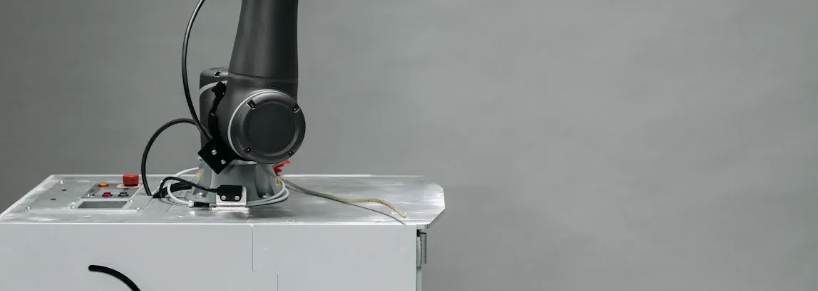 How to Identify the Perfect Proximity Sensor for Your ApplicationUTMEL19 July 2025640
How to Identify the Perfect Proximity Sensor for Your ApplicationUTMEL19 July 2025640Find the best proximity sensors for your project by evaluating material, sensing range, environment, and system needs to ensure optimal performance and reliability.
Read More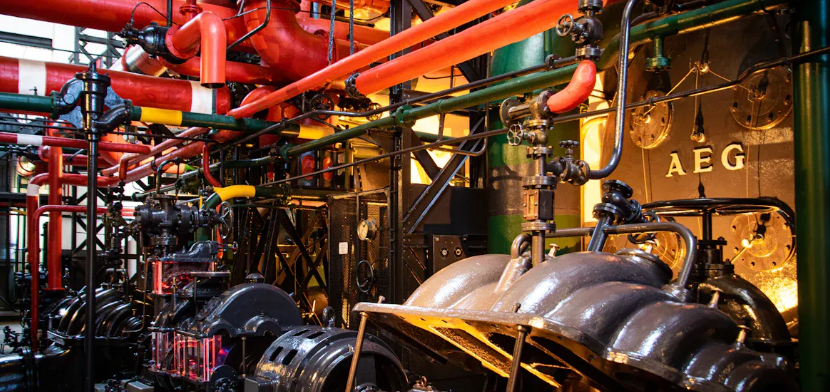 Trusted Vibration Sensors for Homeowners and Industry ProfessionalsUTMEL17 July 2025445
Trusted Vibration Sensors for Homeowners and Industry ProfessionalsUTMEL17 July 2025445Compare top vibration sensors for home and industrial use. Find trusted options for security, predictive maintenance, and equipment protection.
Read More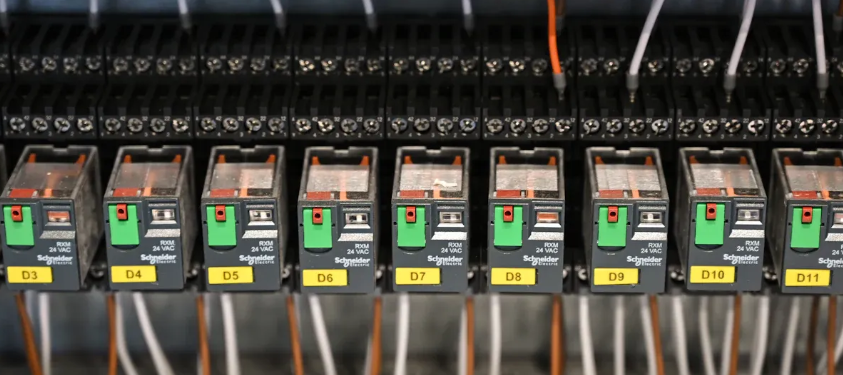 Wiring and Mounting Photoelectric Sensors in 2025UTMEL15 July 2025621
Wiring and Mounting Photoelectric Sensors in 2025UTMEL15 July 2025621Wire and mount photoelectric sensors in 2025 with step-by-step safety, wiring, and alignment tips for reliable installation and optimal sensor performance.
Read More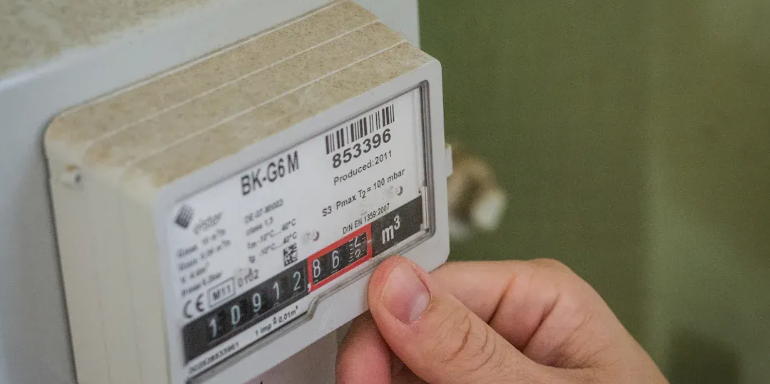 Essential Tips for Picking the Best Gas SensorUTMEL15 July 20251491
Essential Tips for Picking the Best Gas SensorUTMEL15 July 20251491Find out how to select gas sensors by matching target gases, environment, and compliance needs for reliable and accurate gas detection in any setting.
Read More
Subscribe to Utmel !





